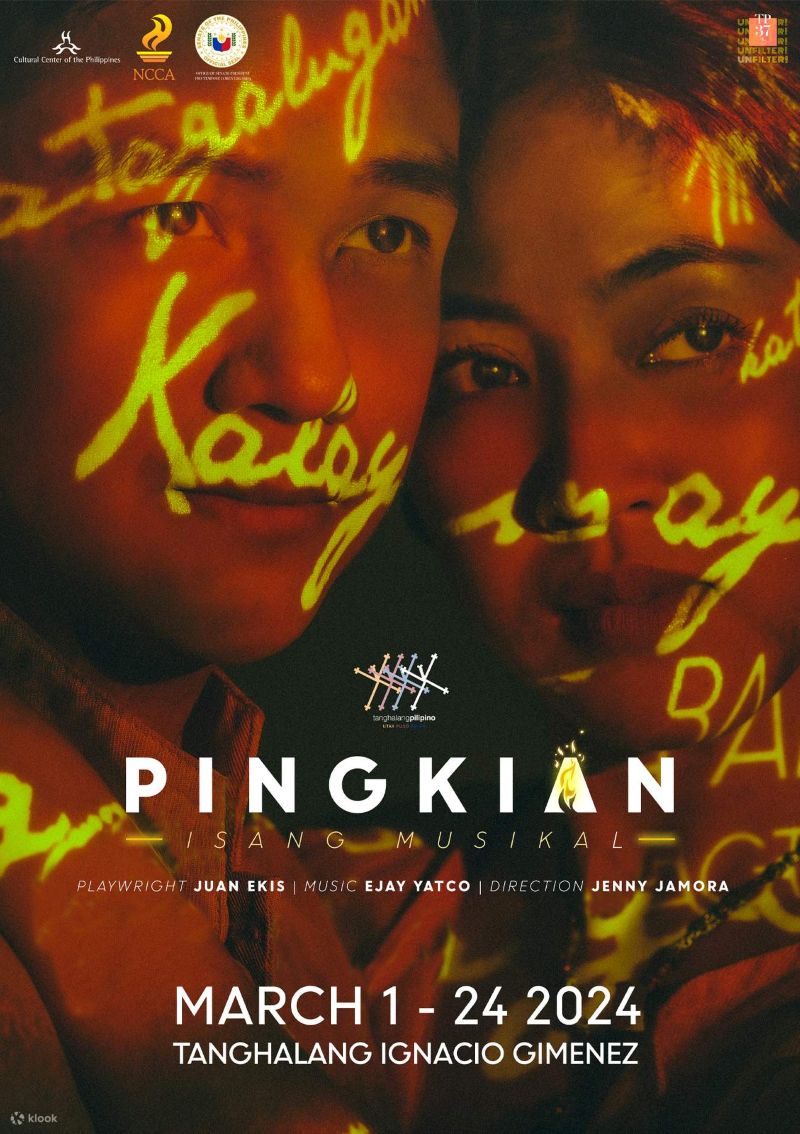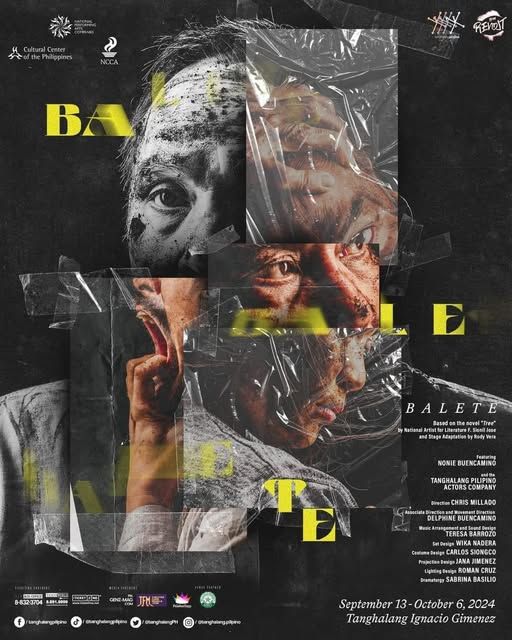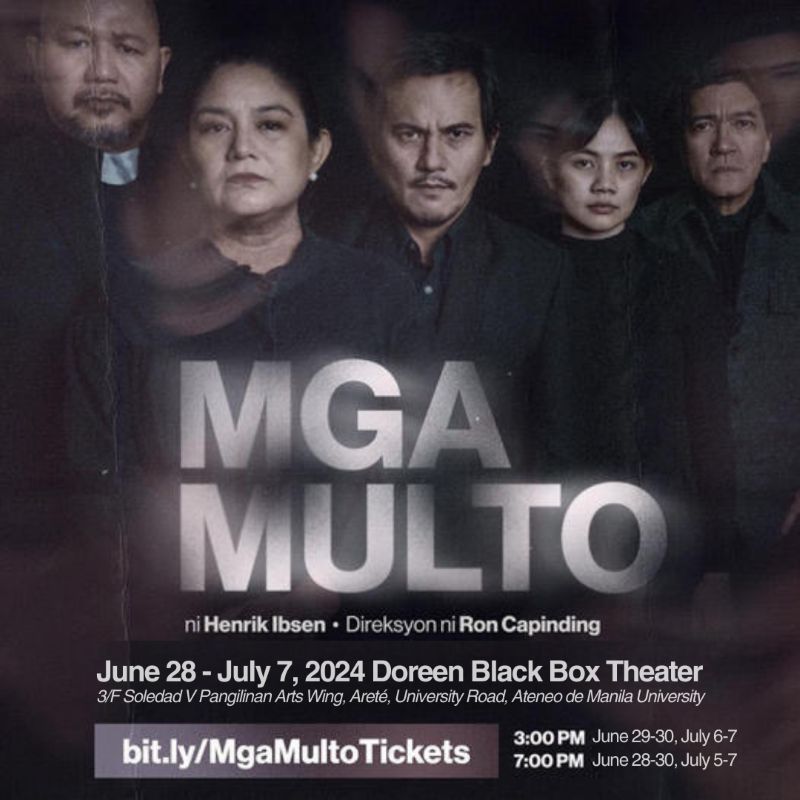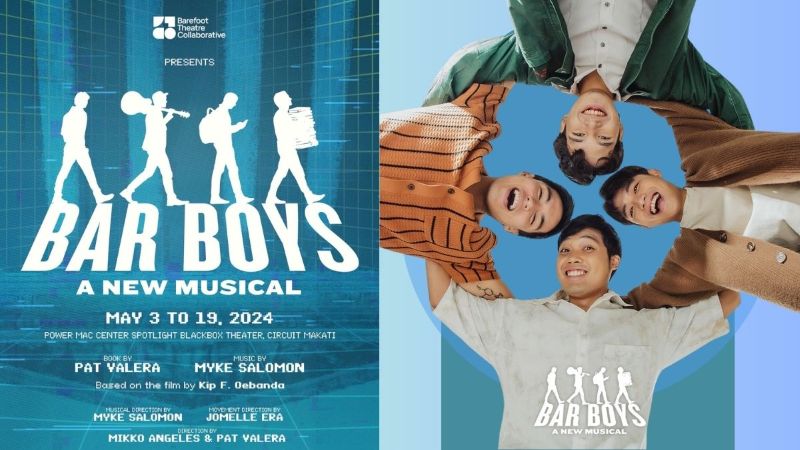From the author’s FB post:
A bit redundant after Gibbs Cadiz’s magisterial and so comprehensive year-end review, but I decided I still want to do my periodic recognition of the off-the-mainstream experiences that are always my favorite theater memories of the year. (No offense to the majors, ha?)
Maybe rather less significant now that, more and more (and gratifyingly), such “small” independent productions are impacting on mainstream attention, so that distinctions are blurring. But anyway…
As a preface and for the record, here are my personal favorites (largely a matter of taste) among the major productions (or what I consider majors—an indication of the blurring, as a couple are by “small” outfits):

‘Pingkian’ by Tanghalang Pilipino

‘Balete’ (Tanghalang Pilipino)

‘Mga Multo’ (Tanghalang Ateneo)

‘Bar Boys’ (Barefoot Theater Collaboration)

‘Othello’ (CAST)

‘I Love You, You’re Perfect, Now Change’ (Repertory Philippines)
(I had intended this to be just five favorites, but…)
And here are my most striking (not necessarily best, out of so many and varied) “small theater” experiences, roughly chronologically:

1. Ang Paraan ng Paglipad, a wonderfully atmospheric staging by Guang Ming College’s Dharma Theater Ensemble (as I understood, all-student) and its director, Kanakan Balintagos, in a wooded grove at the University of the Philippines Diliman in the falling darkness that evoked the epic imagination of uncolonized Philippines.
2. Ang Bakkhai, a high school (!) prod by Ateneo’s Teatro Baguntao, a passionate, and more surprisingly, astonishingly clear rendition by such a young troupe of what I had always found a difficult Greek tragedy.
3. Choosing, by Fire & Ice (Ice Seguerra and Liza Dino), perhaps the bravest and sometimes most raw, dramatic portrayal I’ve seen of the trajectory of a deep but difficult, often painful, partnership that yet injects honest humor and foregoes self-advertisement.
4. CAST’s Patintero sa Ayala Avenue, an indelible, almost-solo performance by young actor Zoe de Ocampo, of a clever transposition (by new playwright Rafael Jimenez) of the spirit of Catcher in the Rye (hence appealing to this boomer!) into the milieu of middle-class Makati.
5. FEU Theater Guild’s restaging of Ang Pinakamakisig sa Mga Nalunod sa Buong Daigdig: I had watched this adaptation of Gabriel Garcia Marquez’s magic-realism, but this iteration heightened its impact for me, with its water-drenched stage design, its evocation of Filipino fabulism, and the surprisingly effective gender-bending casting (that I caught).

6. Ateneo Entablado’s staging of Sa Tahanan ng Aking Ama had an admittedly personal resonance for me in evoking a traumatic historical period that was vicariously present in me from parental tales. (That, and a haunting turn from actor Vino Mabalot that encapsulated the trauma.)
7. CAST’s Gruesome Playground Injuries had such an impact on me that I was tempted to include it as one of my “major” favorites. Its so out-of-the-box portrayal of an outrageous, heartbreaking, and affirming relationship, and the terrific performances of Missy Maramara and above all, Topper Fabregas, were unforgettable.

8 & 9. I shall always think of these two plays of Guelan Luarca—3 Upuan and Mad Child’s Nagkatuwaan sa Tahanang Ito—as a twin-bill, with their so different but complementary excavations into family, their haunting stagings, the incredible ensemble performances of their casts.
Guelan’s acute dramatic meditations having shifted from the sociopolitical to the personal (yet universal). What can we expect next? (Should these even be considered “small” theater? But what else, when 3 Upuan was staged in an Arete backroom with 30-40 people in the audience? It was criminal how few have watched it.)
10. As long as we’re on a Guelan binge: not sure I should include it, as it was a private feeling-out reading. But this Guelan translation of a classic of adultery, Kaliwaan, staged in a nondescript space with an audience of, what, 30, was so good (cast of three, directed by Tami Monsod), do I dare say better than the original (at least for a Filipino audience), that I can’t see ignoring it for a list like this.
The list by no means exhausts the wealth of pleasures from out-of-mainstream theater that’s available in this city.
Just to rattle off some: the beautifully-written vignettes that went into Mad Child’s Ang Walang Hanggang Banyuhay Natin; the sensitive portrayals of Elijah Canlas and Meryll Soriano in Apothecary Prod’s Indigo Child (part of its Emulsyon twin-bill); Floy Quintos’ wonderful tweaking of his Fluid for a quite delightful Ateneo thesis production (sadly, just a few weeks before his passing); Space Bar (another fledgling group)’s imaginatively gender-blind reading of Little Women; the excellent acting duet of Missy Maramara and Caissa Borromeo in The Half-Life of Marie Curie; the so infectiously youthful dancing and warbling in BlueRep’s The Prom.
Speaking of thesis plays: Aside from the above-mentioned Fluid, I caught Ako Si Mary at UP, the daring Rebelasyon at Ateneo, and Dalaga (another reworking of Little Women) at MINT—all worthwhile watches. There would have been more if only so many thesis plays weren’t staged on weekdays. (I was all set to catch a couple of UP thesis plays on their originally weekend sked before they were shifted to weekdays!)
Biggest missed-out regret was Minteatro’s I and You (not a thesis play), which fell during November’s theatrical deluge. And I was on my way (from PETA) to an experimental group Sisid’s show in Makati, only to be foiled by the infamous Christmas traffic.
This listing doesn’t even include those campus theater stalwarts’ major shows, TA’s Sintang Dalisay, and DUP ‘s Nanay Bangis (can they even still be listed as “small” theater?), which (some cavils aside) were beautifully-staged productions (particular shout-out to Sintang Dalisay’s music).
But enough of self-indulgent reminiscing. Just thanks to all those coteries of (mostly young) theater enthusiasts, on campus, or in little cafes and bars, toiling away at creating and expanding our theater world, whether they rise to the big leagues (as a couple seem about to), or are happy nursing their “small” but invaluable initiatives. (Hey, Teatro ni Juan in Marikina, I’m still waiting for your promised new full prod!)
From FB post Dec. 12, 2024:
In the middle of the mad Christmas rush, managed to squeeze in a last theater outing for the year, Mad Child’s Nagkatuwaan sa Tahanang Ito, a Guelan Luarca-translated and Guelan Luarca-directed hardly-known American play (by Sam Walsh), This House Is for Laughing. The thought of the drive from Makati to the Ateneo campus on a weekday was daunting, but thank God, for once, Waze (which said to allow for two and a half hours) erred on the right side (it took me only a little over one hour and a half).
The longer estimate would still have been worth it. As its intriguing title (and my past experiences with Luarca plays) should have primed me, this was as out-of-the-box theater as I could have wished for to end the year. Starting out as a seemingly conventional quirky-family drama, it increasingly worked itself into a mind-bending twist. It would not do to lay out too much here, but where it went floored me. I must say that I was not entirely sold on the premise of the play’s narrative, nor how to take the denouement, but I certainly found it audacious theater.
In any case, it wasn’t the narrative meat of the play that held me in grip, but how it played out on stage. Not at all familiar with the original play, I have no idea how faithful the translation was, but the dialogues were bracingly marvelous, bringing the characters and their relating to each other (on whatever level) to vivid life, funny and combative and haunting. The four actors—Thea Marabut, Joshua Cabiladas, Peewee O’Hara, and Soliman Cruz —formed a superb ensemble, and Luarca’s orchestration of them—and of the terrifically-employed anonymous “staff,” as key to the staging as the main actors—was a just wonderful tour-de-force. Mentally vexing in part (to me anyway) as the play may have been, the production was as memorable as any I’ve watched this season.
I can’t help thinking of this production—its theme of familial relationships, its dexterous staging, its indelible ensemble—as a twin of Luarca’s other recent play, 3 Upuan. How ideal it would be to experience these nuanced excavations of family back-to-back!
It was also my fourth attendance of a Mad Child production, very different from each other but all emotionally and mentally challenging: they had started out with readings (but what material!), and have now moved on to this outstanding full production—well on their way to establishing themselves as a young part of the fabric of local theater.




